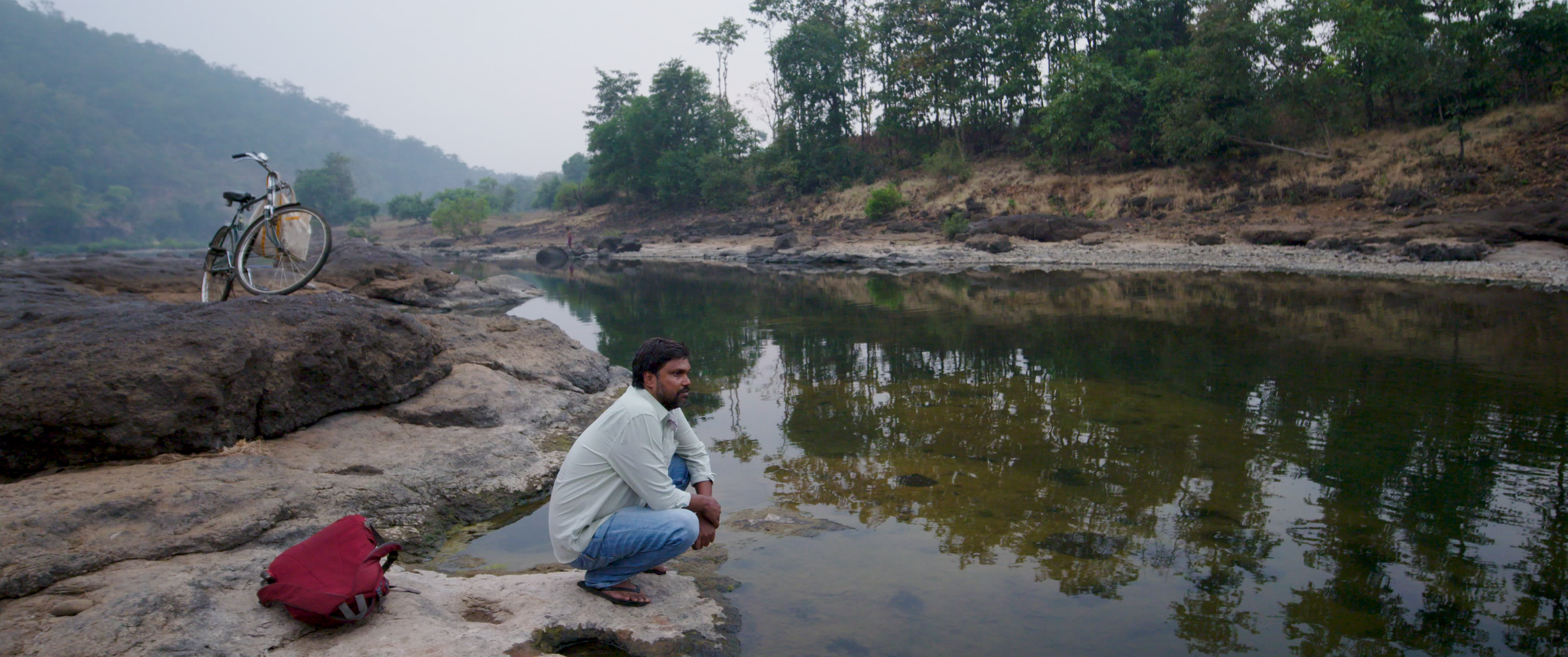
Based on a true story, the hour-long CycleMahesh (2024; screened at YIDFF 2025 in the New Asian Currents section) takes place in India during the COVID lockdown. Mahesh, a construction worker, with no money and no means of transport, spends seven days riding a bicycle alone across mountains and plains, surviving on charity, to return to his hometown 2,000 kilometers away.
His miraculous journey makes the news and draws public attention—politicians visit him, promising jobs and housing, and people on the Internet even joke that he should represent the country in the Olympics. For a brief moment, Mahesh becomes a national figure. His story is hailed as a symbol of endurance and hope.
As with most moments of sudden fame, the attention soon fades. The promises are never fulfilled, and the story that once inspired millions is quickly replaced by the next headline. When the journey ends, the illusion of stardom disappears, and Mahesh quietly returns to the construction site to resume the life he has never truly left.
Suhel Banerjee’s first feature-length film is of an experimental nature, drawing from but not in any way limited by his experience in theater, where, if you go on stage, different actors can play one role. In the film, three actors play the role of Mahesh throughout his cycling trip, from start to finish, as he reaches his home.
Meanwhile, the real Mahesh is present with the production crew, observing the reenactment and occasionally entering the frame. The audience is made to guess and imagine the meaning of each of Mahesh’s appearances and actions. There is also another layer of reality suggested here: as the credits roll and the viewers leave the theater, Mahesh, too, steps out of the frame and returns to his reality as a construction worker.
Suhel Banerjee invites the audience to engage deeply—to feel, to imagine the possibilities of cinema, and to reflect on the connection between art and life. Banerjee borrows ideas ranging including The Odyssey, Kafka’s A Hungry Artist, Camus’ The Myth of Sisyphus, and Hermann Hesse’s Siddhartha. The film’s interrogation of the boundaries between fiction and nonfiction, along with its playful interplay of performance and documentation, may confuse some viewers. The film relies heavily on reenactment and even fictional elements. Yet this deliberate blurring reminds us that truth in cinema often emerges not from pure observation, but from the tension between reality and its representation.
Contrary to the conventions of observational documentary, this film involves a particular kind of acting, from deliberate performance to the modulation of one’s voice. Banerjee pushes the idea of acting to its extreme: the landscape itself begins to act. He brings in a sense of theater into cinema, a performative presence that shapes how we see and feel. Acting lies at the very center of the film, as a way to reveal the hidden reality.
As the film approaches its end, one begins to sense that its documentary essence lies not merely in Mahesh’s story, though that remains an indispensable part of it, but in how the story becomes a metaphor through which the director identifies his own struggle with Mahesh’s struggle. In this sense, it is, in fact, a documentary about the director himself. One scene stands out: the director’s mother appears and tells him that the secret to success is simply to focus on one thing. If he wants to film, then he should focus on filming; but if that doesn’t work out, he can always return to plumbing. This exchange offers a glimpse into the director’s inner struggle.
The use of birds as a symbol represents a special metaphor and a kind of freedom. The film is a peaceful meditation that invites the audience to embark on a journey to freedom. The film ends with a mesmerizing shot in which Mahesh, who never sees the sea in life, finally reaches the shore where birds are flying against the sun. It leaves an openness for the audience to imagine if Mahesh could one day escape all constraints, and if Mahesh could finally cycle his way out of the endless cycle of oppression and exploitation in his life.
Chen-Pang Chang
![ドキュ山ライブ! [DOCU-YAMA LIVE!]](http://www.yidff-live.info/wp-content/themes/yidff-live_2017/images/header_sp_logo1.png)

